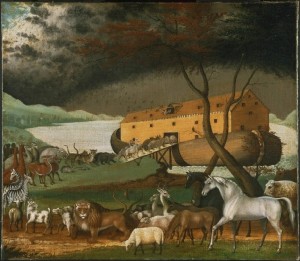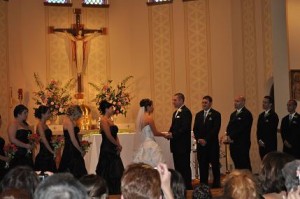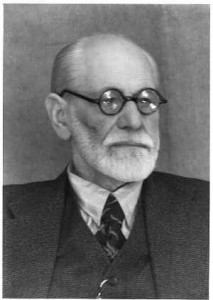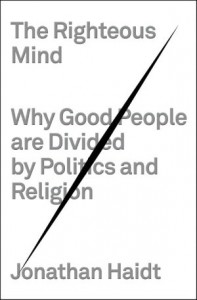This is mark Joseph “young” blog entry #33, on the subject of Novel Struggles.
This is about the creation of my book Verse Three, Chapter One: The First Multiverser Novel, now being posted to the web site in serialized form. This “behind the writings” look definitely contains spoilers, so you might want to read the referenced chapters before reading this look at them. That link will take you to the table of contents for the book; links below (the section headings) will take you to the specific individual chapters, and there are (or will soon be) links on those pages to bring you back hopefully to the same point here. There were also five similar previous mark Joseph “young” web log posts:
- #18: A Novel Comic Milestone (which provided this kind of insight into the first six chapters),
- #20: Becoming Novel (covering chapters seven through twelve),
- #22: Getting Into Characters (for chapters thirteen through eighteen),
- #25: Novel Changes (chapters 19 through 24)
- #27: Novel Continuation (chapters 25 through 30), and
- #30: Novel Directions (chapters 31 through 36).
This picks up from there. Half of these chapters are set in Philadelphia, covering Lauren Hastings’ stories.
There is some essential background to the book as a whole in that first post, which I will not repeat here.
Quick links to discussions in this page:
Chapter 37, Hastings 13
Chapter 38, Kondor 13
Chapter 39, Hastings 14
Chapter 40, Slade 13
Chapter 41, Hastings 15
Chapter 42, Kondor 14
I avoided identifying which verses Lauren was memorizing, partly because I knew that combat was going to have me repeating them and I did not want to overwhelm the readers with them, and partly because if I did not identify them here I could pick which ones I wanted to use when I needed them.
I particularly liked the idea of using a “Payday” candy bar wrapper to mark the target spot under the safe. It’s a white wrapper with bright orange lettering, but would otherwise appear a bit of trash, and the name was just too appropriate to ignore.
The glance at the fire escape is Lauren’s mistake. She could have and should have pushed that safe without looking at it, and her glance cost her the shot because he saw her look and so had time to dodge partially.
Jake is using his “offensive driving” techniques, a name I chose for it although the actions were used by the other players before I joined them. I think they called it “combat driving”.
I’m not sure whether the Super Soakers were my idea, but I had given them the holy water. Since none of the players were either High Church or theologically educated, they did not realize that the priest could create as much holy water as he wished pretty much at will, simply by filling a container with water and blessing it. That gave them ample holy water for their guns, and they didn’t have to purchase it.
Lauren starts using her “holy magic” here, by quoting scripture in faith.
I remember suggesting to the player who ran the priest on whom Father James was based that he should get the words to the requiem mass, because it had quite a few passages in it that would be potent as weapons against the undead. I don’t know that he ever did, as after a couple sessions we wound up playing the same game separately.
The disintegrator rod didn’t really work quite as it appears in the story; it was easier to use. I needed a reason why Lauren would not have made more use of it, and it made sense that it required more effort than the other devices, so I went with that. I also needed to avoid making it a one-shot kill weapon (although that is what it was) so there wouldn’t be a lot of questions about why she bothered with the other weapons in the future. In game, the rods had a repeat factor of one use every two minutes, and this logically expressed itself by making it harder to perform psionics for a minute after using it.
Gavin had blindsided me in the game. The player who played the priest character later commented that it had never occurred to him that they would have had a link, despite the fact that he knew vampires in that world could. I was unaware of that, but that was certainly appropriate since I was not native to that world. Thus my efforts to prevent Gavin from knowing what I did to Jackson were futile—he always knew what was happening with Jackson.
Kondor is teaching himself to track. I had some lessons in this, but never did it, so I was struggling with my memories to make it realistic; but I knew about blazing trails and following the blazes, and about using landmarks and existing trails, so I wasn’t too concerned with getting it wrong.
Arthur C. Clarke is famed for his law that any sufficiently advanced technology is indistinguishable from magic, but the fact is that any sufficiently advanced anything is indistinguishable from any sufficiently advanced anything else—that is, if you can’t figure out how they did it, one theory is as good as another.
The old fire pit was a place I never really explained to myself. At first I was thinking of it as a recent location, that the men had packed and moved to another; but then, the extent of work that constituted their hidden village was too much for this to have been an earlier incarnation, and enough that moving would not have been done more than a couple times a year. So I took this to be a once-used campsite, and never really explained it.
I delayed Slade’s chapter partly because I was not sure, still, what he would do next, and partly because I wanted the feeling of elapsed time for him.
The disintegrator was the obvious weapon, and I needed to eliminate it quickly to get the fight I wanted, so I had her miss the target. In game I would simply have said that the skill failed, and maybe decided whether it missed Gavin or simply did not fire, but here it made more sense for it to fire.
One weakness of magic is that it takes time. I have to imagine Lauren spitting words out very fast to account for why Gavin does not hit her sooner.
My editor thought Lauren was too cruel in the way she killed Gavin. It was the way I had done it in-game, and on one level it was partly because he was such a tough adversary that I had to shoot him multiple times to finish him. It is more difficult in a story for the reader to imagine someone being shot several times at point blank range and not die immediately, but easier to accept that shots which hit appendages are less likely to be fatal, so I focused on that aspect.
I needed Filp’s marriage to be different from Torelle’s, and since it did not seem likely that he would have been out meeting the daughters of other nobles (who still probably did not like or trust him) having him elevate the one girl with the good sense to treat him well when no one did to become lady of the castle was the best option I could find.
When I wrote of Torelle’s wedding, I was putting a lot of my understanding of medieval marriages into it—particularly the aspect that you are to love the one you marry, making a conscious choice to do so. I’ve made that point in modern situations, that love is a choice, and if you are married you should choose to love your spouse, and my wife finds that terribly unromantic and hates that about me. The brief description of Filp and Wen’s very different marriage surprised her, as if she thought I did not understand that kind of relationship as also love.
The prayer for open eyes to find home from the sky was something I did, and the result was quite similar, but in retrospect it must have been a botch: Multiverser magic works based on expectations, so the user should not be surprised by the outcome.
Bethany posed several problems for me. First, in the original game she was a guy, a young wizard who was really very strange in a lot of ways. Second, he insisted that I was Merlin, and at some point gave me Merlin’s pointed hat, insisting that I had given it to him—but Lauren could not be Merlin. I decided that Bethany’s former student should be a girl, and should mistake her for someone else. At this point I knew that Lauren was going to travel to Camelot and become Merlin’s student, and that she was going to take a student later, but now I had to start creating the details.
I seem to recall in game the young wizard was too excited not to identify me, but then apologetic about it. I don’t remember whether I used the quotation to pull his confession from him.
Trying to fill the gaps on who Lauren would be, I grabbed a copy of the roleplaying game Pendragon, I think 4th edition, which had been lent to me to attempt to review. I was looking for somewhere I could place her, and stumbled on the city Wandborough, apparently something that was around during the time of Camelot. I then did a web search and discovered that the city was still there, so I was fairly confident that it had been there continuously through the intervening centuries. “Wandborough” seemed a particularly appropriate name for a city that hosted a wizardess, so I was immediately happy with it. But then, “Lauren” struck me as a modern name. I don’t know whether that is true, and I never actually checked its pedigree, but I decided it was probably a shortened form of “Laurel Lynn” or “Laurelyn”, and that it would work for an ancient name to have that shape. She thus became Laurelyn of Wandborough, and since the map showed Wandborough in western England somewhat north of Camelot, I added “Mystic of the Western Woods”. It seemed a good name altogether.
I was now playing time games, and I knew that I had to make good on what Lauren told Bethany in the past when she got to that point. Complicating it, that’s in the second book.
I was still not certain how to handle telepathy, and in this case I did not mark it at all, which is as much a mistake as using quotes.
The bag that I was given by my apprentice contained the coin and the heads from four dolls. I never figured out what they did, and did not understand what they did even after Ed told me. I needed that coin for the direction I expected to take the story, but I also needed there to be several other objects in the bag. Thus at this moment I knew what the bag did and that it contained the coin and several other objects, but I also knew I was going to have to figure out what they were pretty quickly.
The paper towel was an obvious precaution, a way for Lauren to manipulate the objects without touching them.
One of the game tricks I learned from watching Ed was the notion “I can do something with that.” The objects were all relatively ordinary objects which could be given magic properties of some sort, and could really be anything at all but might be fun to work with. I had no idea what any of them were or did at this point. In fact, although the acorn becomes a very significant object that ties the three-book arc together when it is revealed in the third book, I had no expectation that it would be special and no idea what it was until the first book was in print and I was writing the second. The questions Lauren asked trying to unravel what they were were very much the same questions I was asking trying to give them function.
The discourse on magic is one of my first efforts to get Lauren thinking in this direction. If she is to be a wizardess and Merlin’s student, she is going to have to accept the concept of magic as a neutral power that she can use without violating her faith. I had covered some of that in the Faith and Gaming series, but obviously she had never read any of that.
Of the last five chapters, three have been Hastings. Things were happening fast in her story, and moving slowly in the others, and I thought this would support that.
It seemed to me obvious that this was Robin Hood; I thought it would seem obvious to Kondor, too. Who else would it be?
Kondor sees this as a civil rights issue, tinged with the racial oppression of the Normans over the Saxons, although he never says so outright. It is inherent in his comment about fighting for the rights of the poor.
That “freedom and justice are everybody’s war” becomes something of a theme in Kondor’s philosophy.
This is the end of the twelfth century, and the time in which both magic and science are in their infancy as ways of manipulating reality. Both were feared by the church, but the use of natural medicines was readily accepted.
I vaguely recall my editor objecting that a disease had to be either bacterial or viral, but he overlooked other possibilities, the big one being parasitic, but of course there are others including allergic, genetic, and organ failure. I did not revise the text.
This was the beginning of the notion that Kondor would establish himself as a medical doctor in Nottingham. I had not really thought of going that direction, even at this point, but it came naturally from the situation. It is probably an example of one of those situations of which authors speak, in which their characters insisted on taking the story in an unanticipated direction.
It would not at all be difficult for Kondor to find his camp—his equipment was there, so he could follow the scriff sense, but I did not mention that, and was more interested in suggesting that he was becoming more familiar with forest life.
Interest in these “behind the writings” continues, so I’m still thinking they’re worth producing. Feedback is always welcome, of course. Your Patreon support is also needed to maintain this.
[contact-form subject='[mark Joseph %26quot;young%26quot;’][contact-field label=’Name’ type=’name’ required=’1’/][contact-field label=’Email’ type=’email’ required=’1’/][contact-field label=’Website’ type=’url’/][contact-field label=’Comment: Note that this form will contact the author by e-mail; to post comments to the article, see below.’ type=’textarea’ required=’1’/][/contact-form]











